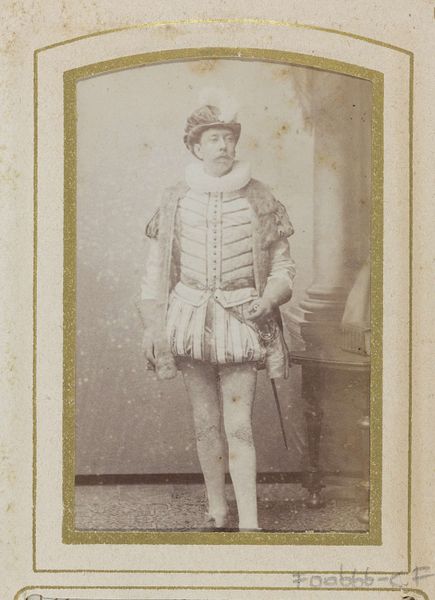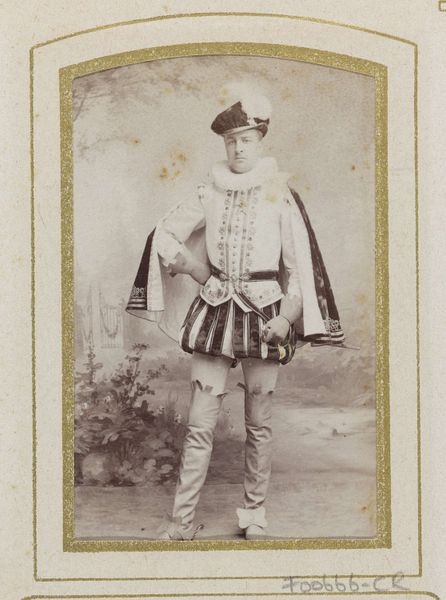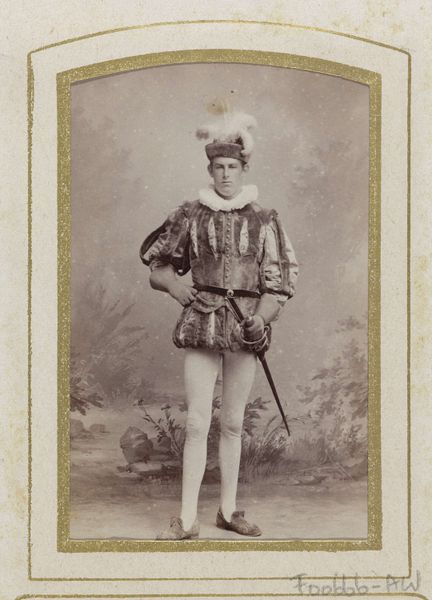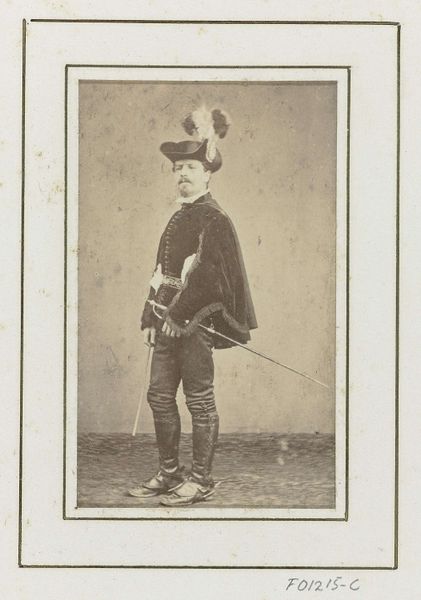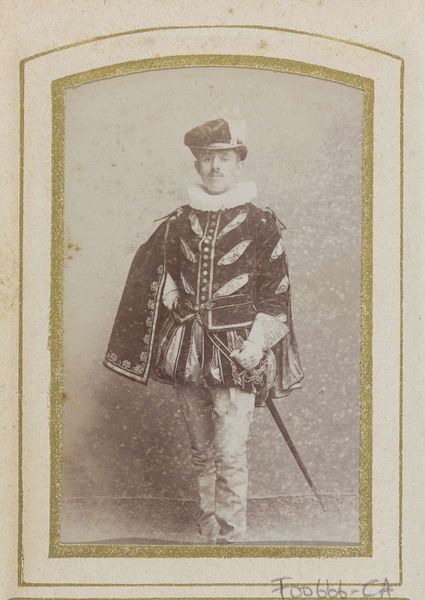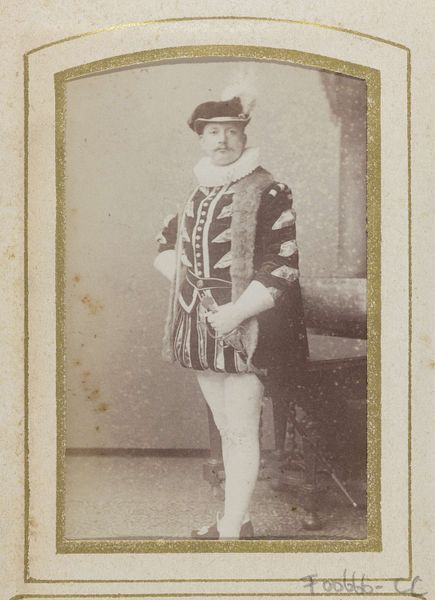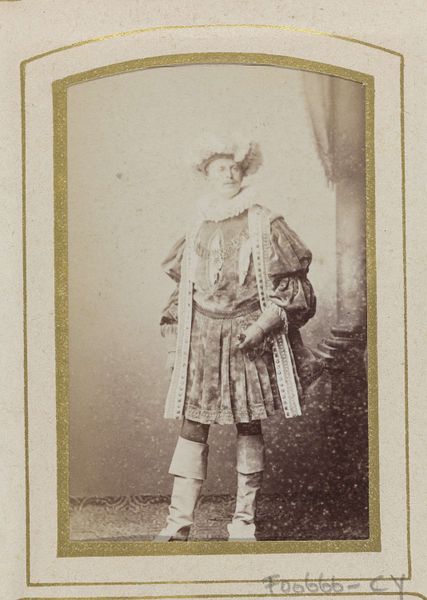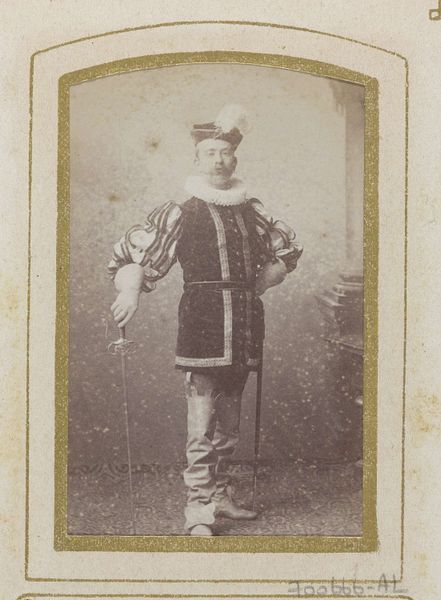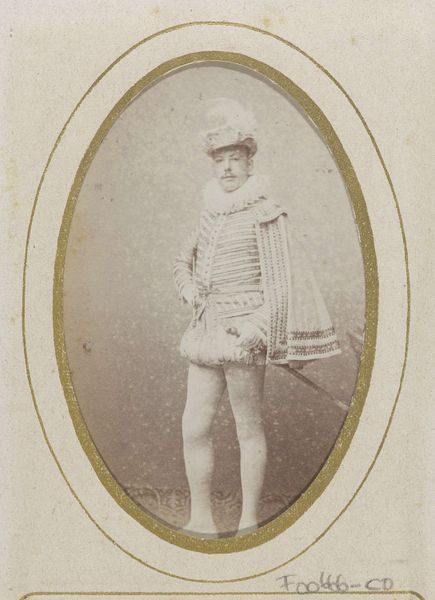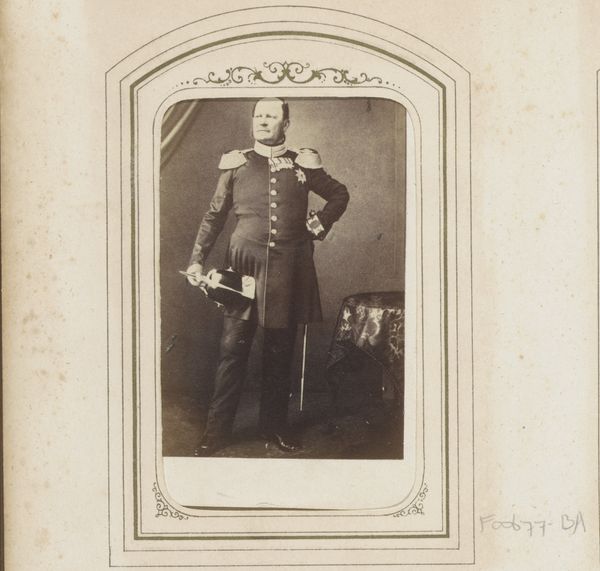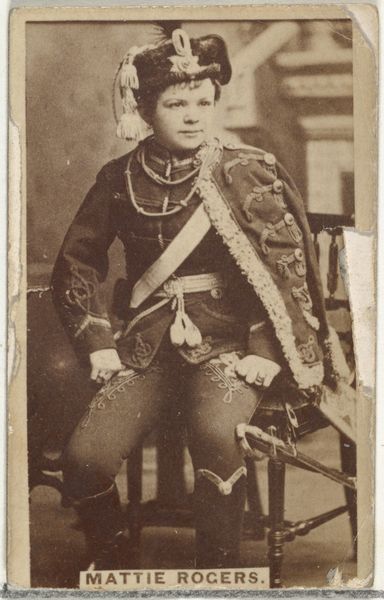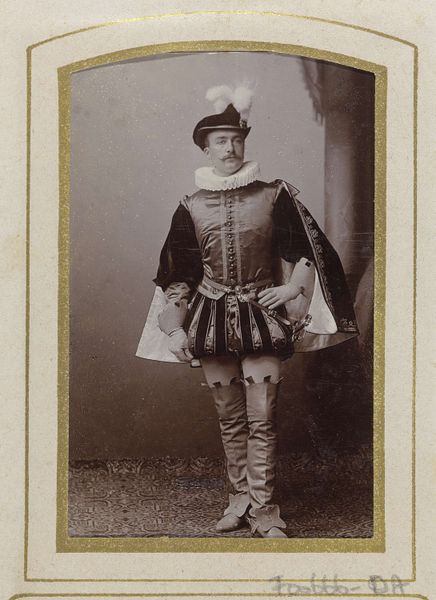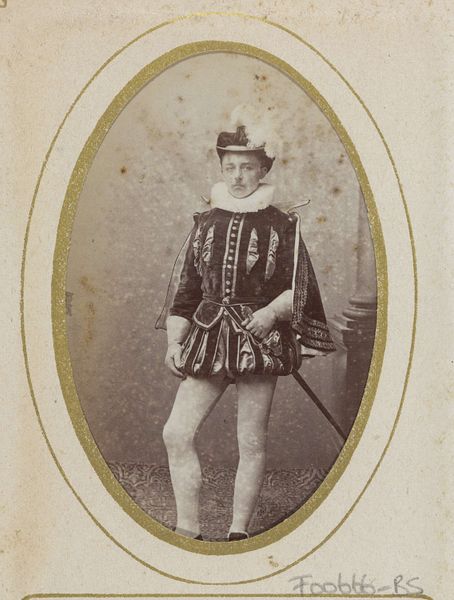
Dimensions: height 93 mm, width 58 mm, height 105 mm, width 63 mm
Copyright: Rijks Museum: Open Domain
Editor: Here we have "Portrait of a Boy in Masquerade Costume," a photograph by Maurits Verveer dating from around 1861 to 1883. There's something so intriguing about early photography, and the fact that this child is costumed adds another layer of mystery. What can you tell me about this piece? Curator: What strikes me immediately is the relationship between artistic pretense and photographic 'reality.' This isn't just a portrait; it's a performance meticulously crafted through clothing, props, and setting. We have to consider the economic forces that allowed for the mass production of costumes. Where would a boy obtain such clothing, and why photograph him? Editor: So, you're saying the materials used and their accessibility provide important insights? Curator: Precisely! The photograph itself, a relatively new and rapidly evolving medium, democratized portraiture to a degree. What materials, chemicals and photographic process did Verveer have access to? How readily available were these resources, and to whom? What kind of statement was Verveer attempting by presenting the photograph in a hand-drawn ornamental border, seemingly emulating more expensive painting processes? Editor: It is interesting to consider all the various levels of access in order to appreciate art such as this. This makes me see beyond the single image, considering the socio-economic contexts instead. Curator: Exactly! By looking at the materiality and the social context, we gain a much richer understanding of what the work represents and how it functioned in its own time.
Comments
No comments
Be the first to comment and join the conversation on the ultimate creative platform.
